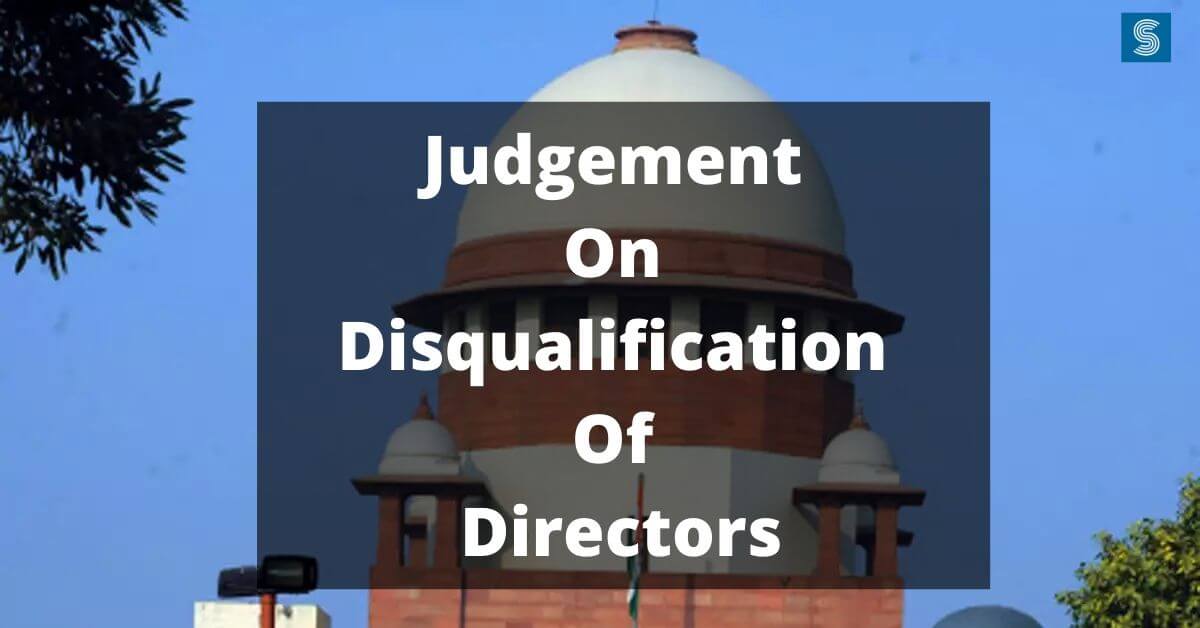What are the Different Modes of Removal of Directors?

Savvy Midha | Updated: Feb 03, 2020 | Category: DIN
Directors of the company are responsible for controlling, managing and directing the day-to-day activities and affairs of the company. The collective body of Directors is known as the Board of Directors. Directors are known to be a trustee for the company’s property and money; sometimes they also act as an agent for transactions they entered on behalf of the company.
Since directors are the most important part of the company, why the consequence of the removal of directors arises? Powers to remove directors are bestowed in the hands of shareholders. They can be removed before the expiry of their tenure except for those directors who are appointed by Tribunal or Government.
In this blog, we will understand possible modes of removal of directors under the Companies Act, 2013.
Browse through our articles on services provided at Swarit Advisors, and just let us know if we can help you with your Appointment and Removal Directors or Director Disqualification.
Table of Contents
Modes of Removal
We have enumerated the different modes of removal of a director from the company under Companies Act 2013:
| Mode I | Removal of director in case he resigns himself |
| Mode II | Suo-moto removal of a director by shareholder |
| Model III | Removal of director in case director doesn’t attend three board meeting in a row |
| Mode IV | Removal of director by Tribunal |
| Mode V | Removal of Director by Government |
Different processes are prescribed for different modes of removal of directors which we have discussed henceforth.
Process of Removal of Directors
Following are different process based on a different mode of removal of the director:
1. Self-resignation: In case the director resigns himself from the post of director. Company shall follow these steps to remove such director:
- Hold the board meeting giving seven days notice
- The board shall on mutual consent decide whether to accept the resignation or not
- Pass the necessary resolution for accepting the resignation by a director
- Once the resolution is passed, the director shall file his resignation on MCA through DIR-11 along with resignation letter attached
- Since DIR-11 is the responsibility of the director, Company shall file DIR-12 intimating to the registrar about the resignation of director
- Once DIR-12 is approved, the name of the director from the master data of Company on MCA is also removed.
2. Suo-moto removal: This mode of removal of the director states that the company can remove the director by passing Ordinary Resolution in General Meeting provided such director is not appointed Government or Tribunal. Following steps should be followed for this mode of removal of the director:
- Shareholders holding 1% of the total voting power or holding INR 5 Lakhs of paid-up capital shall send the special notice of his intention to the company.
- Within 14 days of special notice, the company shall conduct a general meeting of members for considering the removal of a director
- Such special notice shall not be earlier than 3 months of the proposed date of General Meeting
- The company upon the receipt of special notice shall send a copy of such notice to concerned director to give him a reasonable opportunity of being heard and to present necessary representation
- The company thereafter shall send notice of removal of director to all other members along with the copy of representation made by director
- Members shall conduct the general meeting and pass Ordinary Resolution for the removal of the director. During the meeting votes cast in favor shall be more than votes cast against it.
- Once the resolution is passed, similar forms DIR-11 and DIR-12 are filed with the attachment of ordinary resolution for removal
- Company shall fill the casual vacancy occurred due to such removal by the appointment of some other director up to the date till which predecessor would have held the office, if not removed
3. Director did not attend 3 consecutive Board Meeting: As per this mode of removal of a director, in case any director does not attend three board meetings in a row in any financial year, shall be deemed to vacate his office and the company shall file DIR-12 on director’s name.
4. Removal of Director by Central Government: Central Government upon the recommendation of NCLT has the power to remove managerial personnel in the following cases:
- Directors are found guilty of fraud, misfeasance, or default
- Director carry such activity which is against business principal or policies
- Any such transaction that causes injury to the trade policies of industry
- Director indulge in transactions or activities for defrauding its members or creditors
5. Removal of Director by NCLT: Through this mode of removal of a director, the company appeals to the National Company Law Tribunal for preventing any mismanagement in the company and upon the receipt of such appeal NCLT can terminate or set aside such agreement of company with its director. The removed director doesn’t get compensation from the loss of office.
Safeguards against Removal of Director
As we have discussed process and modes of removal of a director, companies act also provides the following safeguard to the director who is being removed:
- Representation in writing: Concerned directors can make representation in writing to the company against such removal. Director can also request the company to send his representation along with notice to all the members of the company. Also, the director can appeal to the company for his representation to be read out at the meeting as well.
- Appeal to Tribunal: Aggrieved party or organization can apply to Tribunal requesting for nullifying the process. Tribunal can entertain the appeal and set aside the process if it found the director is misusing this right for unnecessary publicity.
Non-filling DIR-12: Consequences
As we have discussed above, removal of the director irrespective of the mode of removal of a director shall be intimated to Registrar through the filing of DIR-12. However, if the company fails to do the same within the due date:
- One time of government fees: For delay up to 15 days
- Twice the government fee: For delay exceeding 15 days to 30 days
- 4 times the government fees: For delay from 30 days to 60 days
- 10 times the government fees: For delay exceeding 180 days
- In case the company failed to file DIR-12 within 300 days of passing resolution: 12 times the government fees plus compounding fees are payable by the company














